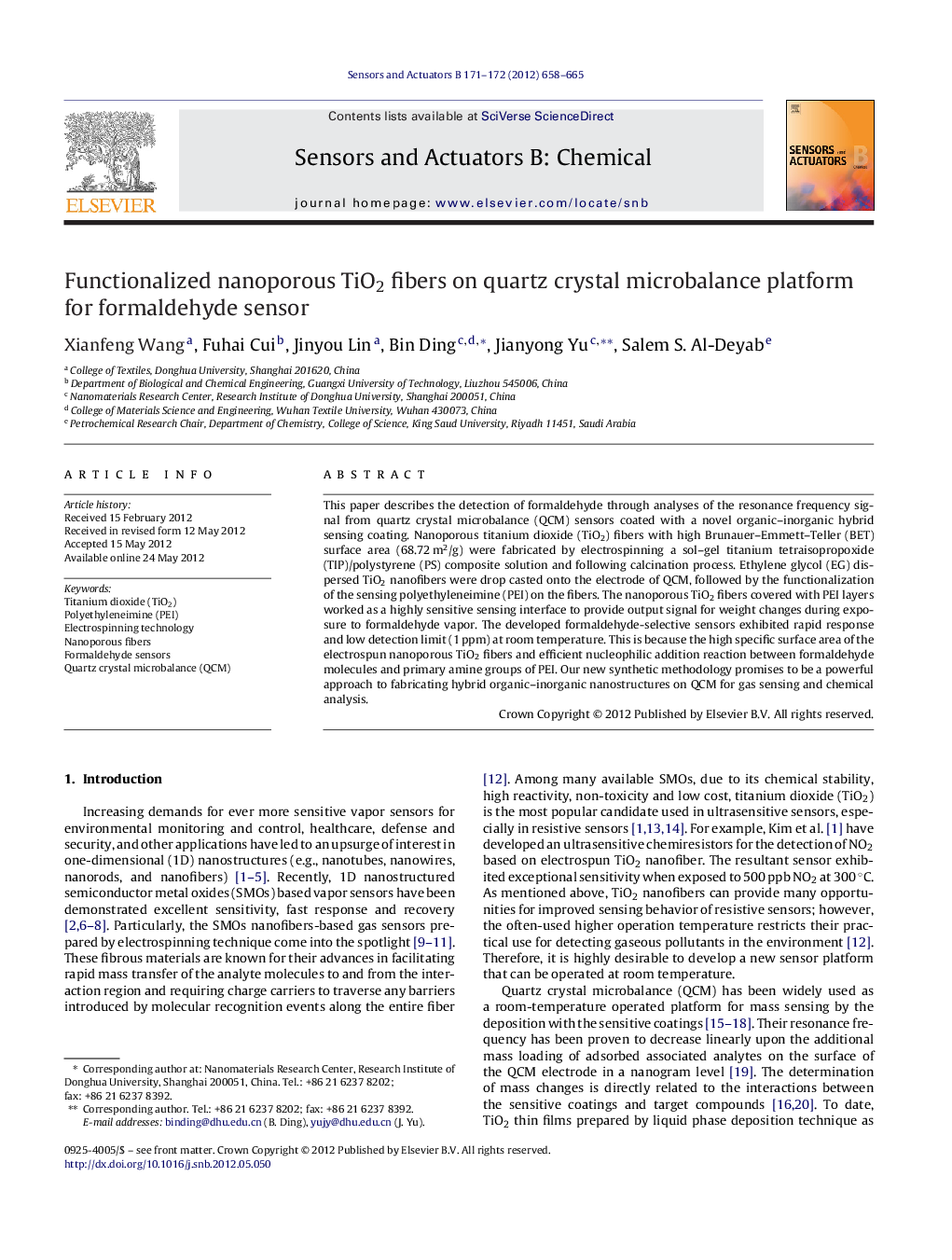| Article ID | Journal | Published Year | Pages | File Type |
|---|---|---|---|---|
| 745521 | Sensors and Actuators B: Chemical | 2012 | 8 Pages |
This paper describes the detection of formaldehyde through analyses of the resonance frequency signal from quartz crystal microbalance (QCM) sensors coated with a novel organic–inorganic hybrid sensing coating. Nanoporous titanium dioxide (TiO2) fibers with high Brunauer–Emmett–Teller (BET) surface area (68.72 m2/g) were fabricated by electrospinning a sol–gel titanium tetraisopropoxide (TIP)/polystyrene (PS) composite solution and following calcination process. Ethylene glycol (EG) dispersed TiO2 nanofibers were drop casted onto the electrode of QCM, followed by the functionalization of the sensing polyethyleneimine (PEI) on the fibers. The nanoporous TiO2 fibers covered with PEI layers worked as a highly sensitive sensing interface to provide output signal for weight changes during exposure to formaldehyde vapor. The developed formaldehyde-selective sensors exhibited rapid response and low detection limit (1 ppm) at room temperature. This is because the high specific surface area of the electrospun nanoporous TiO2 fibers and efficient nucleophilic addition reaction between formaldehyde molecules and primary amine groups of PEI. Our new synthetic methodology promises to be a powerful approach to fabricating hybrid organic–inorganic nanostructures on QCM for gas sensing and chemical analysis.
